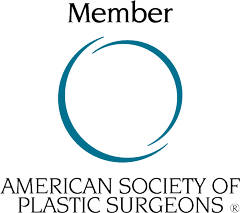
For many years surgeons have been able to inject patient’s fat cells into other parts of their body. A typical fat injection procedure involves removing the fat from unwanted areas, processing the fat, and then reinjecting into an area such as the face, lips, or buttocks. Progress has been made gradually over the years, and the micrografting techniques pioneered by Sidney Coleman have stood the test of time. Fat has been injected reliably into areas that were thought to be impossible.
One of the newest frontiers for fat injection is irradiated tissue in the breast. After cancer diagnosis and mastectomy, many women undergo radiation therapy. Breast reconstruction is either the choice of a free flap (breast made from your own tissue) or breast implants. It has been our well documented experience that putting implants in irradiated tissue is fraught with complications, so implants are often not a good option. This is because irradiated tissue is damaged, and the blood supply does not work as well as in normal tissue. The preferred mode of reconstruction has been vascularized tissue, that is tissue that has its own blood supply. This type of breast reconstruction following the cancer removal is referred to as a free flap or a tram flap.
Bringing in a piece of tissue with its own blood supply for a reconstruction makes sense when you need a lot of tissue, as when a mastectomy is done. A total mastectomy is the total removal of the breast tissue. Instead of getting implants for the breast reconstruction, some women undergoing a total mastectomy can have a breast made from their own vascularized tissue–a tram flap or free flap.
But what about the case of a lumpectomy? Lumpectomy patients only have a small portion of the breast removed because their cancer is not widespread. Thus, they are left with one breast smaller than the other. However, they are not really candidates for free flaps or tram flaps. Up until recently, reconstruction choices for lumpectomy patients were to either leave one breast smaller or place a small implant in the one breast.
There is now an additional choice to reconstruct the smaller breast with fat injections. The fat is extracted from the patients stomach, flanks or thigh areas , processed in a special technique , and then reinjected into the breast.
Originally I was skeptical when I heard you could inject fat, without its own blood supply, into an irradiated breast. And yet…It works! Not only does it work, fat injection to the breast works better than I ever thought it could have. The reason is that this injected fat plays a role in healing the irradiated tissue. The research shows stem cells within the fat cell population have a role in regenerating and restoring the tissues. The breast not only gets a reconstructed shape, it is literally rejuvenated by the fat cells.
I am very hopeful about reconstructing patients who have had a lumpectomy for cancer. This is a great advance that will give great results. I have already started incorporating this fat grafting technique for lumpectomy patients into my practice. Fat grafting to the breast is a great alternative to an implant!




Sam says:
Dr. Ricardo L Rodriguez says:
shawnell says:
Dr. Ricardo L Rodriguez says:
Gloria B. says:
Dr. Ricardo L Rodriguez says:
Daniel Kyung says:
Dr. Ricardo L Rodriguez says:
Sue says:
Dr. Ricardo L Rodriguez says: